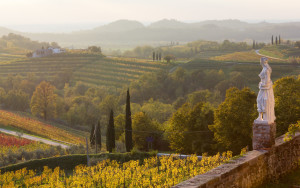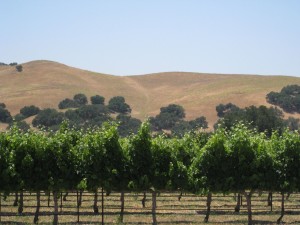Here are a few recent updates to the ever-changing landscape of wine region rules and regulations!
The 334th DOC: In July of 2016, the Italian Ministry of Agriculture officially approved Italy’s 334th DOC: The Friuli DOC. This region has not yet been approved by the EU, but it is not believed that this should be merely a formality, and Italy has approved use of the term beginning with those wines released from the 2016 vintage. As we previously reported, the new DOC will cover the entire southern half of the Friuli–Venezia Giulia region (the northern half being rather mountainous and alpine and not generally suitable for viticulture).
The new Friuli DOC encompasses all of the area of the six previous DOCs of the region. The DOC will produce red, white, and sparkling wines from a range of grape varieties. Still while wines may be produced as a blend (Bianco) or labeled as one of the following varieties: Chardonnay, Friulano, Malvasia, Pinot Bianco, Pinot Grigio, Riesling (which may include Welschriesling), Sauvignon Blanc, Ribolla Gialla, Gewürztraminer (Traminer Aromatico) or Verduzzo Friulano.
Still red wines may also be produced as a blend (Rosso) or varietally-labeled as Cabernet Franc, Cabernet Sauvignon, Merlot, Pinot Nero (Pinot Noir), or Refosco dal Peduncolo. A red wine labeled as “Cabernet” will contain a minimum of Cabernet Franc, Cabernet Sauvignon, and/or Carmenère.
Sparkling (Spumante) wines may be produced using the Charmat or Metodo Classico production methods, and may be produced using any combination of Chardonnay, Pinot Blanc, Pinot Grigio, and/or Pinot Noir grapes. Unique to the Friuli DOC is the production of varietally-labeled sparkling wines (either Charmat of Metodo Classico) wines made using the Ribolla Gialla grape variety; this particular wine is not approved for production in any of the other DOCs of the region.
Expansion of the Sta. Rita Hills AVA: On August 22, 2016, the TTB approved the expansion of the Sta. Rita Hills AVA by 2,296 acres (930 ha). The ruling becomes effective on September 21. The newly-approved area expands the original boundaries of the AVA on its eastern side. The move is summarized in the petition as follows: “the proposed expansion would move a portion of the AVA’s existing boundary further to the east, to a road within a north-to-south canyon, named “Cañada de los Palos Blancos,” located west of Buellton.”
The Sta. Rita Hills sits in the western portion of, and mostly within, the larger Santa Ynez Valley AVA (which is in turn part of California’s Central Coast AVA). The Sta. Rita Hills AVA was originally approved in 2001 and, as many California wine lovers know, the name was shorted to “Sta. Rita Hills” from the original “Santa Rita Hills” in order to avoid a conflict with Viñas Santa Rita, an established producer of Chilean wines.
The expansion has been in the works since March of 2013 when the original petition was filed on behalf of the owners of Pence Ranch and John Sebastiano Vineyard, both of which are located within the new boundaries of the Sta. Rita Hills AVA. The main grapes grown in the area covered by the new AVA boundaries are Pinot Noir and Chardonnay. There is a small amount of Grenache and there are plans to plant Syrah in the near future.
The petition for the expansion was not without controversy, as evidenced by the large number of comments filed on the TTB’s docket; two comment periods were allowed which generated over a total of 118 comments. The controversy mainly centered on the climate of the expansion area. As Sta. Rita Hills is known as a cool climate region, it was argued that the areas to the east—and therefore further inland—did not share the same cooling influences. However, the TTB determined that the climatic differences were minimal. There were also arguments about differences in soil–you can read the very interesting comments for yourself on the TTB Docket.
Read the press release here: TTB expands the Sta. Rita Hills AVA
post authored by Jane A. Nickles…your blog administrator
Are you interested in being a guest blogger or a guest SWEbinar presenter for SWE? Click here for more information!

